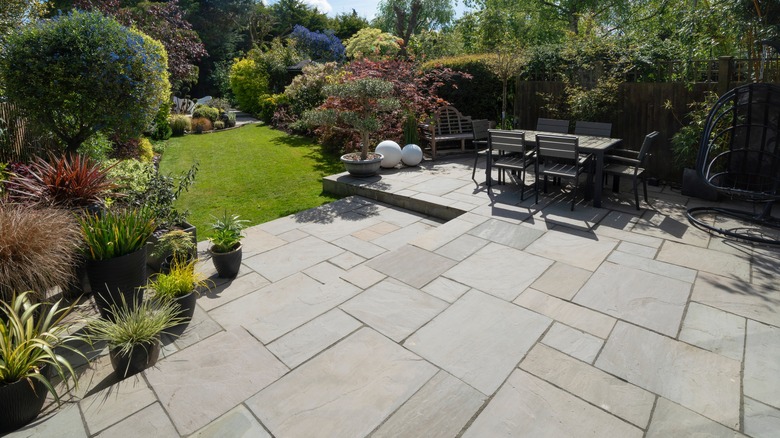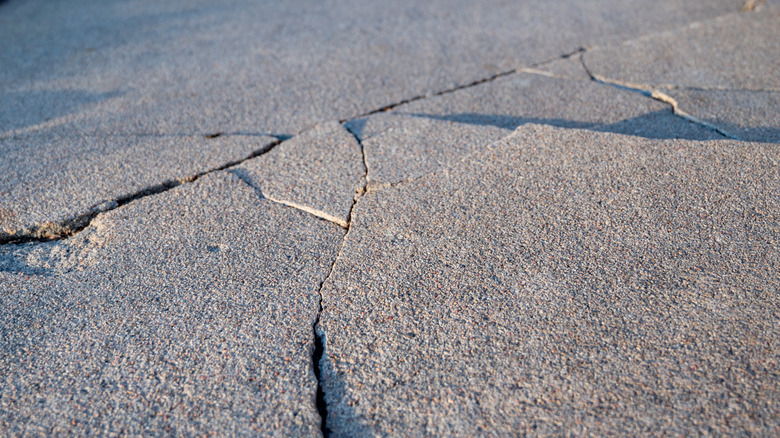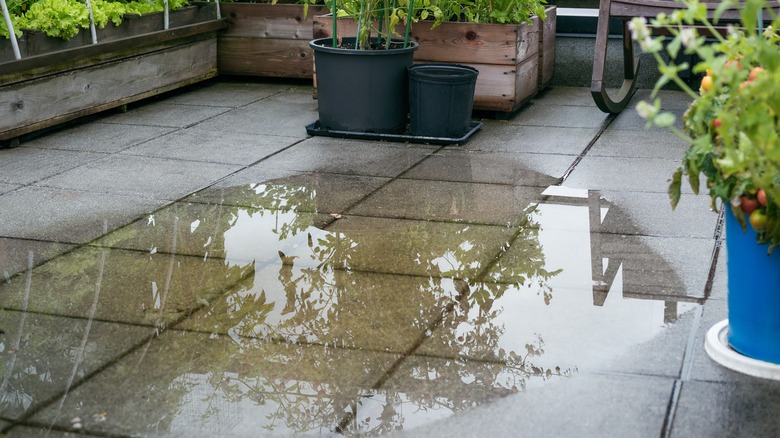The Early Warning Signs That Your Patio Desperately Needs An Update
If you enjoy spending time outdoors on summer evenings, having the perfect patio design enhances the feeling of relaxation. However, all the design ideas in the world won't help much if there are warning signs popping up that indicate some repairs need to happen. If you notice drainage issues or standing water after a rainstorm, or a cracked or uneven surface, you may need to make some repairs and upgrade the space.
You may also find that your patio is simply too small and in need of an expansion. But it's important to be mindful of how you go about this, otherwise, you'll just bring about the above-mentioned problems. Adding a new slab of concrete to an existing patio slab is a common solution for expanding your space, as it maintains the same look that you already have. However, it's important to use proper leveling techniques and avoid low spots when adding the new slab, or you'll have massive drainage issues as well as an uneven surface that may be hazardous to walk on.
What to do if you have cracks in your concrete patio or uneven pavers
An early sign of structural problems for your patio is when you start to see cracks in the concrete. Cracks will continue to expand and grow and may end up causing a trip hazard, which is especially dangerous if people will be walking on the area regularly. Not to mention, a cracked patio is also a major red flag for potential buyers if and when you choose to sell your home. If left untreated, you'll probably have weeds and dirt accumulate in the cracks, making them unsightly.
You could try to repair cracked concrete as soon as you notice the problem. You need to clean the cracks with a wire brush and a broom to remove any dirt or gravel that has accumulated in them. Use a patching compound and apply it with a trowel to cover the crack and smooth the material. You may want the help of a pro for fixing significant cracks. If the cracks become too large or if repair simply isn't working, you may have to tear out the old patio and repour a concrete slab.
If you have pavers on your patio and are noticing heaving pavers or weeds growing between them, you may have an unsightly trip hazard. To fix a few uneven pavers, you can lift them up and add or remove dirt and sand under them. If you have significant heaving issues, you may have to take all of them out and reset the ground underneath to make it level before reinstalling the pavers.
What to do about drainage issues and standing water on your patio
If you are noticing standing water collecting in a low spot on your patio after a rainstorm, this is an early sign of an issue that needs repair. Allowing water to continue to collect in this area creates slippery mud and will draw insects. It could freeze in the winter, causing an even greater slip hazard. You may end up with a sinkhole under the slab, which speeds up the damage.
Over time, water left standing on concrete will cause cracks and other damage in the area. The sooner you can address the issue that's causing the drainage problem, the better chance you'll have of saving the patio. One option to fix it is to use a self-leveling concrete compound to fill in the low spot. This is a temporary solution, though. Another option is to raise the low portion of the concrete patio through a process called mudjacking, in which a pro will pump slurry underneath the slab by drilling holes in it.
If the problem relates to the natural settling of an older concrete patio and if the damage is extensive, you may need to replace the patio. A professional inspector can give you advice about whether trying to save the slab is a good idea. If you have cracks or discoloration along with the low spot, this is a sign it may be time to start over with a new slab.


